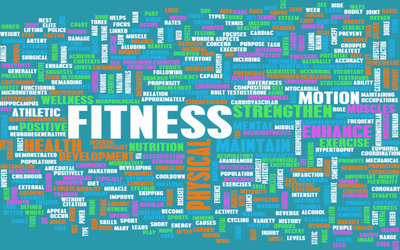HEALTH AND FITNESS: Failing grades for physical activity
It’s probably no surprise that the majority of Americans are not active enough. Only about half of adults meet even the minimum recommendation for physical activity of 30 minutes per day, five days per week. Compounding this problem is the fact that many people spend much of their time at work and home being sedentary – some spend more than 12 hours per day sitting!
Low levels of physical activity is associated with an increased risk of heart disease, stroke, some cancers and obesity in adults. Becoming more active is probably the most important change a sedentary person can make to improve their health. The impact is similar to a smoker who quits.
What may be surprising is that this is a problem for children, too. Less than half of children ages 6 to 11 are active for 60 minutes per day. Among teenagers, it is less than 10 percent! The health effects of too little activity in kids is similar to that of adults.
The combination of inactivity and obesity can lead to “adult” diseases such as type 2 diabetes in young people. For this reason, some experts predict that this generation of children may be the first ever to die at a younger age than their parents.
Current recommendations call for children under the age of 18 to attain at least 60 minutes of moderate-to-vigorous activity at least five days per week. In younger kids this can be achieved through active play. In teens it is more likely to include organized sports and games.
The National Physical Activity Plan is a set of recommendations, programs, and initiatives designed to promote an active lifestyle at work, school, and home for all Americans. It was established by an alliance of health professionals and researchers.
This group recently released a report card on physical activity for children and youth that graded the success of efforts to promote activity in several areas. The results show that we are failing to meet even minimum goals and recommendations. Here is a summary of that report card:
• Overall physical activity: D-. Only 42 percent of 6- to 11-year-old children and just 8 percent of kids ages 12 to 15 meet the 60 minutes per day activity goal.
• Sedentary behaviors: D. About half of all children spend more than the recommended upper limit of two hours of screen time, which includes TV, computer and video games, per day.
• Active transportation: F. Just over 10 percent of children walk or bike to school regularly.
• Physical education in school: C-. Only about half of children attend at least one PE class per week.
Based on these grades, American children are not getting enough physical activity. But it isn’t fair to say that our children are earning these grades – it’s the adults who are failing! Most children are at the mercy of parents, teachers, and other adults who decide how they will spend their time at school and at home.
The report card shows that we are either not allowing our kids to be active enough or limiting opportunities for them to move and play. This isn’t necessarily a conscious effort, but is likely a consequence of the physical activity habits of adults that our children adopt.
Given the importance of regular activity for growth, development, health, and even academic success, getting our kids to be more active should be among our highest priorities. This requires both individual action and organized community efforts to make physical activity and exercise a part of every child’s day.
And while we are at it, we (the adults) should make this same effort. Perhaps the failing grades on the recent report card will motivate us.
Brian Parr, Ph.D., is an associate professor in the Department of Exercise and Sports Science at USC Aiken where he teaches courses in exercise physiology, nutrition and health behavior.


Comments are closed.